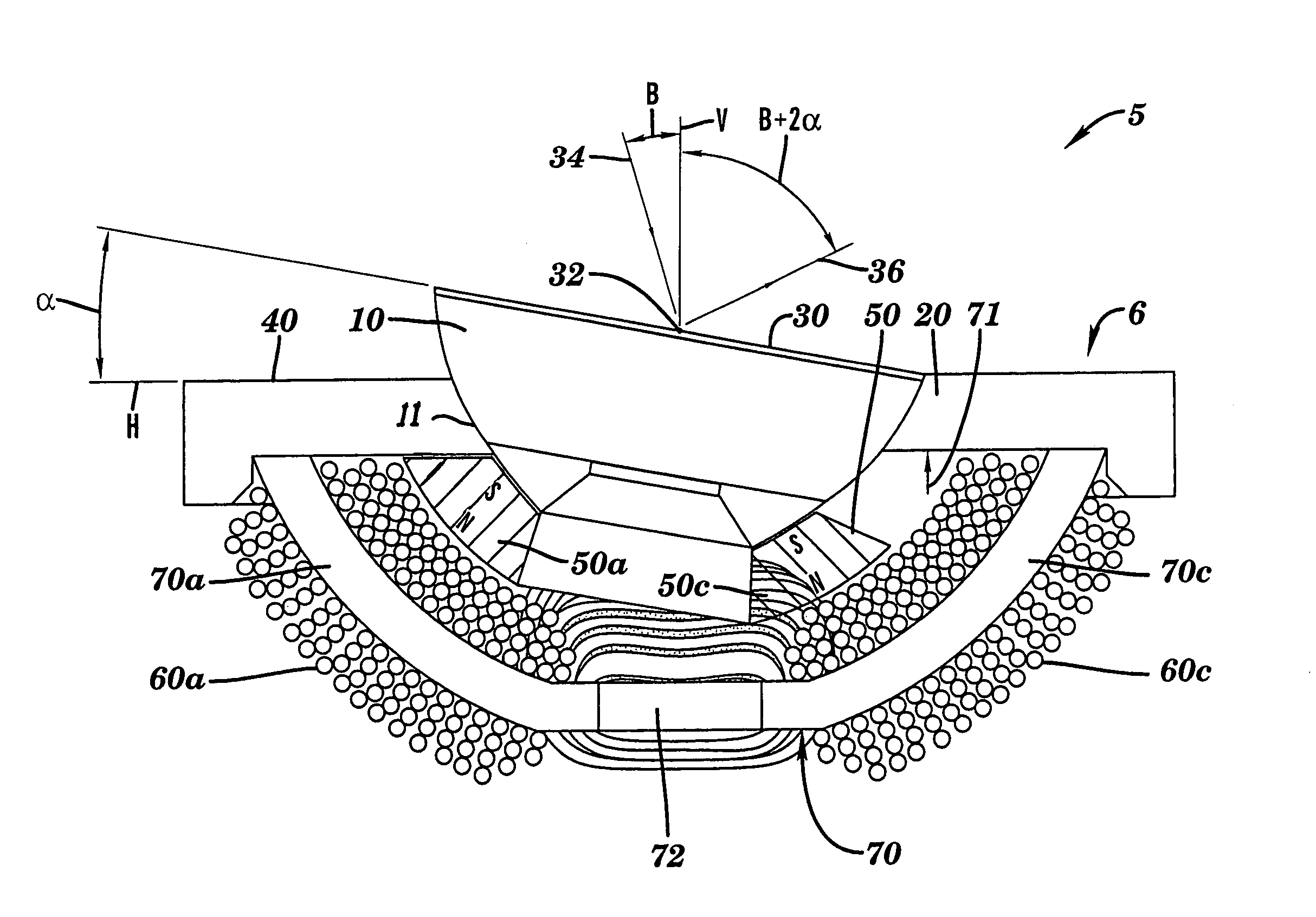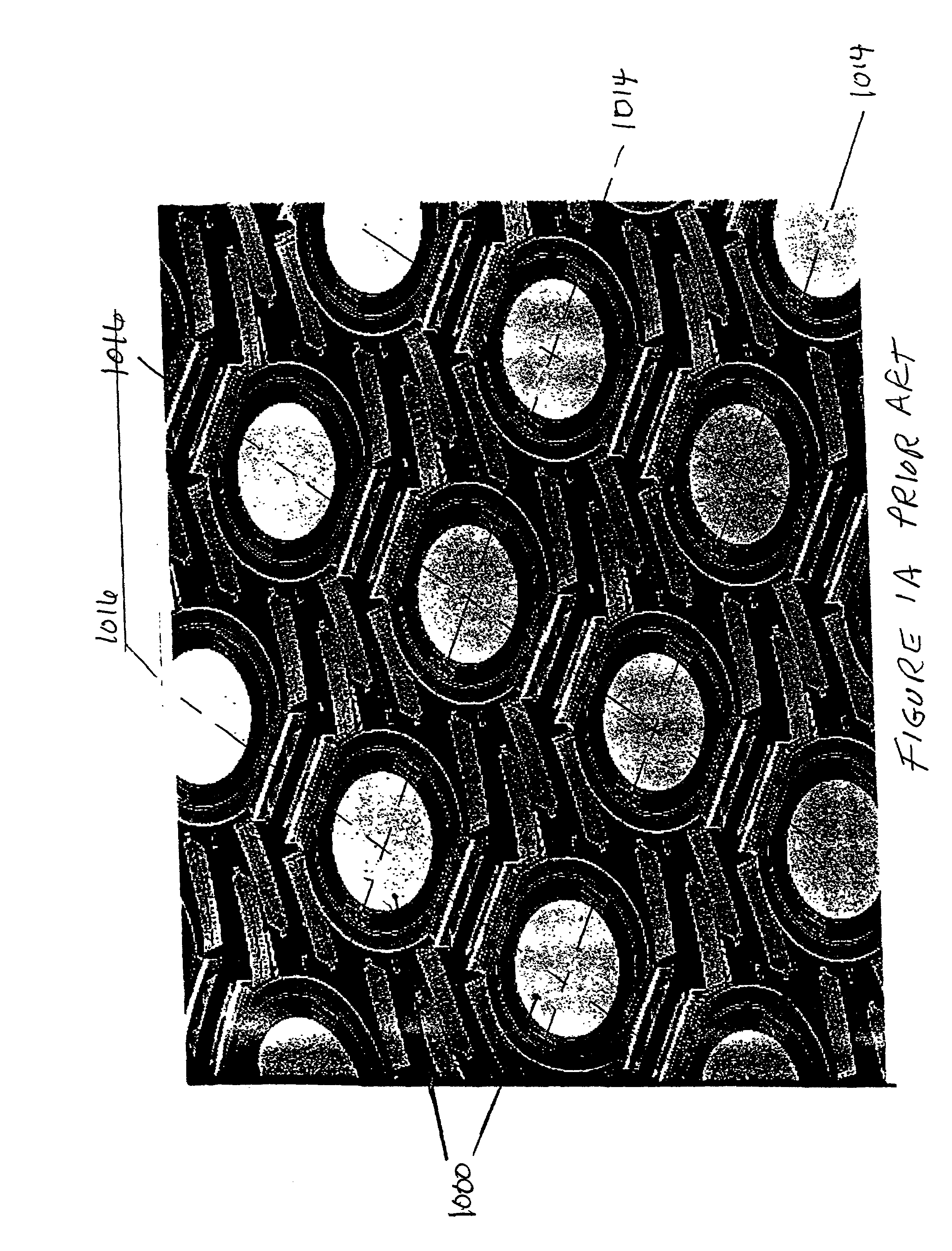Apparatus for controlled movement of an element
- Summary
- Abstract
- Description
- Claims
- Application Information
AI Technical Summary
Benefits of technology
Problems solved by technology
Method used
Image
Examples
Embodiment Construction
[0053]It should be stated at the outset that the invention is susceptible of many embodiments and is applicable to other and various uses where dynamic control of the directional orientation from a reference point, of a very small platform or device is needed, particularly with little or no power required to hold a desired position once acquired. What follows is merely a description of a preferred embodiment, and should not be construed as limiting of the scope of the invention.
Ball and Socket
[0054]Referring now to FIGS. 3–7, there is illustrated the general layout of a preferred embodiment of the invention. FIG. 3A depicts a sectional view showing a two axis optical beam steering apparatus 5 in the general form of a ball and socket assembly. It is comprised of a movable member 10 in the form of a spherical or ball portion having an outer bearing surface 11 supported in a fixed member 40 that includes a spherical raceway or socket 20 for forming a seat in which the movable member 10...
PUM
 Login to View More
Login to View More Abstract
Description
Claims
Application Information
 Login to View More
Login to View More - R&D
- Intellectual Property
- Life Sciences
- Materials
- Tech Scout
- Unparalleled Data Quality
- Higher Quality Content
- 60% Fewer Hallucinations
Browse by: Latest US Patents, China's latest patents, Technical Efficacy Thesaurus, Application Domain, Technology Topic, Popular Technical Reports.
© 2025 PatSnap. All rights reserved.Legal|Privacy policy|Modern Slavery Act Transparency Statement|Sitemap|About US| Contact US: help@patsnap.com



